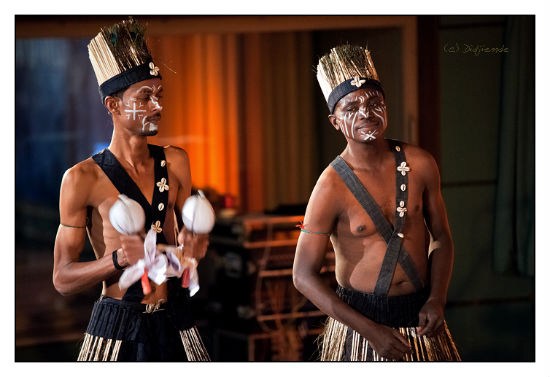
Image by: CC BY-NC-ND 2.0/Flickr/Photos de Didjiemde

Posted:
Growing up in India, I never met or heard about Indians with African lineages. Then in 2005 I watched a dance performance by the Sidi Goma, a group of musicians from the African Indian community, the Siddi, and I was astonished and mesmerised. Since then I've discovered that India's African roots are much older than the Siddis, and are not only evident in numerous other communities, but percolate through direct descent in the blood of at least 600 million Indians.
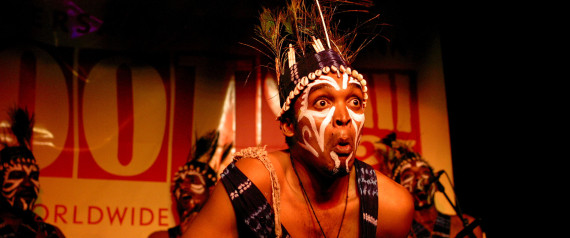
The Siddis
The Siddis who arrived in India, over a thousand years ago, between 700 and 900 AD, are perhaps the "youngest" African immigrant community here. They were brought on ships by Arab merchants who sold them as slaves to Indian rulers. Known to be powerful warriors, the Siddis were often used as soldiers and played important roles in the armies and in political warfare.
One of the most famous Siddi military commanders, Malik Ambar, was revered as the "military guru," of the Maratha kings. He was equally feared and detested by the Mughal emperor, Jahangir (Richard M. Eaton, 2005, A Social History of the Deccan). In fact, where most other Hindu kingdoms were overpowered by the Mughals, the Marathas remained indomitable partly due to the war tactics introduce by Malik Ambar. One of these was guerrilla warfare, often used in Africa, but unknown to traditional Indian battles, which, as depicted in the epic Mahabharata, involved armies confronting head-on on an open battlefield. Soldiers of the Nawab of Hyderabad's elite African Cavalry Guards were held in high social esteem. Even later during the 1857 Indian mutiny against British rule, many of the soldiers who died fighting for the Nawab of Oudh were Siddi soldiers, including women (Llewellyn-Jones, 2011, "The Colonial response to African Slaves in British India", African and Asian Studies 10(1):59-70).
Many Siddis either bought their freedom, or escaped to the forests to form independent communities. They would eke a livelihood by performing as street musicians, animal entertainers or as mystical seers. In Bombay, many of the Siddis were Sufis and were honoured by all communities as spiritual healers. Other Siddis fought and usurped the thrones from rulers, as in Bengal, while still others established their own kingdoms. Among these kingdom provinces were Janjira and Jaffrabad established around 12 AD. Khadki, later to be Aurangabad, was founded by Malik Ambar. Janjira which was a well fortressed, meticulously planned and constructed, self-contained, island kingdom under successive Siddi kings, lasted 300 years as it successfully warded off frequent attacks. After India's independence from the British, in 1948, it voluntarily seceded to the Indian Union (Great Britain India Office, The Imperial Gazetteer of India, 1908).
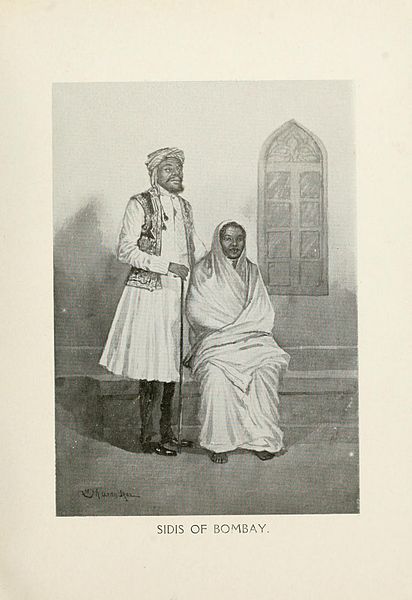
Sidis of Bombay, Illustrations by M. V. Dhurandhar
From the book By The Ways of Bombay, 1912
There are only about 55,000 Siddis in India today. They live in small, insular communities in Karnataka, Maharashtra, Andhra Pradesh, West Bengal and Gujarat. Unfortunately, in the span of a thousand years in India, the Siddis lost track of their origins, histories and cultures. One of the young Siddi musicians at the concert I attended talked about how as children they'd be subject to racist jibes of "Habshi", or told to go back to Africa. Once, their troupe was held up by airport officials in India who assumed they were illegal African immigrants. He said the odd thing was that like most Siddis he had never even heard of Africa. Their food, clothes, and language are completely adapted to the local cultures of whichever part of India a particular Siddi community lives in.
Yet, traces of the Siddis' African roots still echo in their dance and music traditions. They are evident in the animal representations in the dance movements and the painted face masks. The malunga), a tall, one-stringed bow, like the Brazilian berimbau), is an African musical instrument. There are Swahili words in their songs that the Siddis have long forgotten the meanings of. "Goma" for example is a derivative of the Kiswahili word "ngoma" for drums and also refers to dance forms, such as the ones Sidi Goma performs (where drums play a major part). The polyrhythms in Siddi music and the call-and-response style of singing are also characteristic of the Ngoma music of the east African Bantus. Interestingly, recent genetic analysis of the Siddis (Narang et al 2011; Shah et al 2011), identify Y-DNA markers that establish that the Siddis' ancestors were probably Bantu and from other Sub-Saharan tribes.
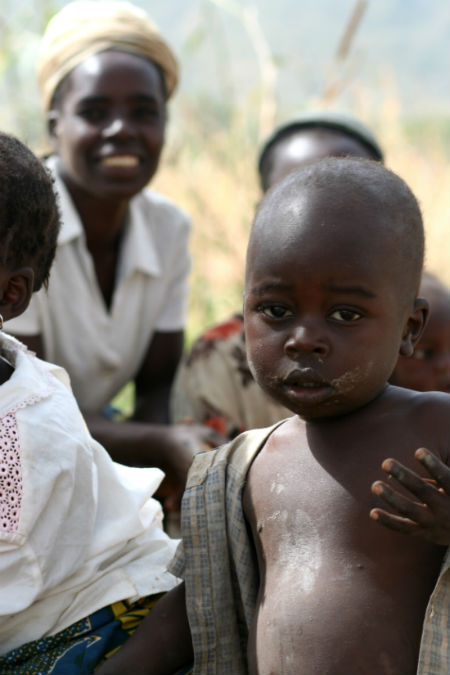
A Jarawa child. Image by: CC BY 2.0/Flickr/Jeremy Weate
The Roots go deeper
However, there are communities in India with African ancestries that arrived long before the Siddis. They were not brought as slaves, but migrated in large groups via land and sea. There are believed to be two such waves of immigration, which are differentiated by time, and distinctive racial features and genetic markers. The group that came from eastern Africa via a coastal route about 60,000 years ago, identified as Negritos, are generally of shorter stature, with very dark, smooth, hairless skin, and short, frizzy hair. They formed communities that are now rapidly disappearing like the Onge, Jarawa and the Great Andamanese in India's Nicobar and Andaman Islands.
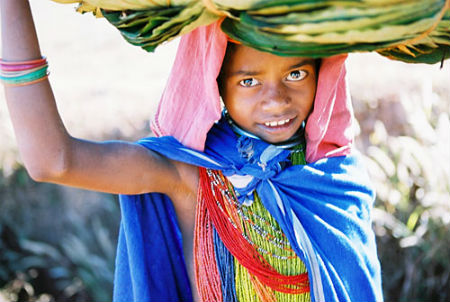
Bonda girl in Orissa. Image by: CC BY-NC-SA 2.0/Flickr/Otabi kitahachi
The other group of migrants, known as the proto-Australoids, arrived later, about 50,000 years ago. They are racially distinct from the Negritos in that they have longer, wavy hair. They are also said to be the ancestors of the Australian Aborigines. Today they survive in a number of small, isolated communities like the Gond, Khonds, Bhil, Santhal, Bonda, Kol, and Munda in different parts of India.
The original inhabitants of the land, they are India's indigenous people, who formed the "bedrock" of the populations and the civilisations that evolved here. Though they were largely forest and farming communities, they also evolved into urban societies, and between 4000-5000 years ago, they built towns and cities of remarkable sophistication as seen in the Indus Valley. DNA analysis of human remains and artefacts such as the female bronze figurine called the "Dancing Girl," from the Indus period, confirm the presence of Afroid and proto-Australoid races (S.C. Dube, 1992, Indian Society).
The Vedic turn

There are also extensive references to and information about these early indigenous communities and cultures in the Vedas, the sacred text of the Vedic people, a sub-Caucasoid group that immigrated into India between 3000-4000 years ago.
The Vedics were warring, cattle-herding nomads, and referred to the urban dwellings of the indigenous people as "Krishna garbha"--the womb of the black people - who they described as "flat-nosed" and "bull-lipped" (A. Eraly, 2002, Gem in the Lotus). They frequently attacked the indigenous settlements with a desire to "burn," "crush" and "bury" their enemies, who they equated with the "night," "demons" and "evil" (Rig Veda 7.104, 10.97). The caste system imposed by the Vedics reflected their race and colour prejudices, and likely ensued in response to inter-breeding through marriage or rape. ( Jaiminiya Brahamana I.161-63 hymn is a clear reference to the rape and murder of the indigenous goddess "long tongue" or Kali, by the Vedic gods Indra and Sumitra.)
The word for caste 'Varna,' means "colour," and plainly refers to the race-based colour coding for the caste hierarchy, in which whites were designated as Brahmins, the highest caste, browns (called "red" in Sanskrit) to the second highest caste of nobles and warriors, yellows or the oriental race (of which too there were indigenous tribes) to the merchant caste, and blacks were designated to the lowest or the slaves' caste.
Though the Vedic religion is often regarded as the foundation of Hinduism, the overwhelming body of mainstream Hinduism today consists of the beliefs and customs of the indigenous people. The Vedic religion was non-iconoclastic and its rituals were exclusive and centred on set hymns, memorised and chanted only by priests. The indigenous people were animistic, had iconic representations for their gods and goddesses and also revered nature in different forms.
Indeed, even though the Vedics scorned the idol-worshipping practices of the indigenous people, idol worship, as well as the worship of diverse deities in trees and animal forms like the elephant, monkey, tiger, snake, etc. underlies present-day Hinduism. The Lingam (penis) and Yoni (vagina) icons that have a prominent place in the Hindu worship today, also originated in the indigenous cults, as Indus artefacts indicate. Similarly, the goddess worshipping Shakta traditions in Hinduism evolved from older prehistoric female fertility cults that the earliest settlers most likely brought over from Africa. Furthermore, the religious celebrations and festivals of the indigenous peoples involved the use of song, dance and story-telling, which again is a distinguishing feature of modern Hinduism.
The major Hindu festivals in India today, including Durga and Kali Puja, Janmashtami, and the popular festival of colours - Holi, are from the indigenous traditions. Most interestingly, most of the principal gods of the contemporary Hindu pantheon today are not the Vedic gods, but the dark-skinned gods and goddesses of the indigenous people that the Vedic texts once regarded with trepidation as "evil," "destructive" or "belligerent."
These include Shiva,Vishnu, Krishna and Kali. [Details and references for the interaction of the indigenous and the Vedics cultures are in my book Sex and Power: Defining History, Shaping Societies, Penguin Global, 2009, pages 26-65, 111-178]
So India's forgotten African roots don't just survive in little, hidden pockets of "tribal" communities, but thrive in the mainstream culture.
Africa in our genes
"Very significantly, at least 600 million Indians, a large section of India's population, trace their ancestral roots directly to Africa."
Would knowing help India overcome its sadly internalised, self-negating form of racism
Biology gives us an even more significant piece of information. Recent studies on mitochondrial DNA, show that the mtDNA haplogroup "M," which is one of the direct genetic markers of lineages that migrated "Out of Africa," has a frequency of 60% in India. Its frequency drops to 0.6% in Europe. (Kivisild et al. 2003 in Examining the Farming Language Dispersal Hypothesis ; Roychoudhury et al. 2000, "Fundamental genomic unity of ethnic India is revealed by analysis of mitochondrial DNA", Current Science 79:1182- 1192; M. Danino, "Genetics and the Aryan debate", Archaeology Online)
What this means, as these papers too state, is that biologically India is tied far more closely to Africa than to Europe, contrary to what was earlier thought. Very significantly, at least 600 million Indians, a large section of India's population, trace their ancestral roots directly to Africa. Furthermore, other genetic studies indicate that the 'sub-Caucasoid' gene pool from the Vedic invasion, is not only miniscule in India, but that it's actually 'pre-Caucasoid' and part of a diverse north or north east African gene pool that came here via Europe!
Oddly, despite such extensive and deep-rooted connections, most Indians know nothing about the history of their African descent, or its impact on their cultures. It is a state of total amnesia, something like what the young Siddi man talked about at the concert.
For me, the more interesting question is how would India respond if it were to learn about it? Masaaba Gupta, daughter of Bollywood actress Nina Gupta and West Indies cricket legend, Vivian Richards, in an interview, talked about how she learnt to deal with Afro-phobic, racist comments by laughing them off - "If someone would tease me about my hair, I would laugh... if someone called me black, I would laugh." She said she also abandoned her desire to act in Bollywood films, convinced that her looks wouldn't be acceptable to the public.
I wonder - would her response be different, if she knew, if India knew, that the African blood that flows through her veins, also nourishes more than 600 million Indians? Would knowing help India overcome its sadly internalised, self-negating form of racism, the one the Vedic caste system so brutishly institutionalised in the nation's psyche, the one that makes Indians run in terror from their own darkness as they attempt to drown it in gallons of skin whitening cream?
Would knowing and embracing our African history and lineage, help us to own and celebrate ourselves with joy and pride? I believe it will.

Sidi Goma Concert, 2005. Image By: Rita Banerji
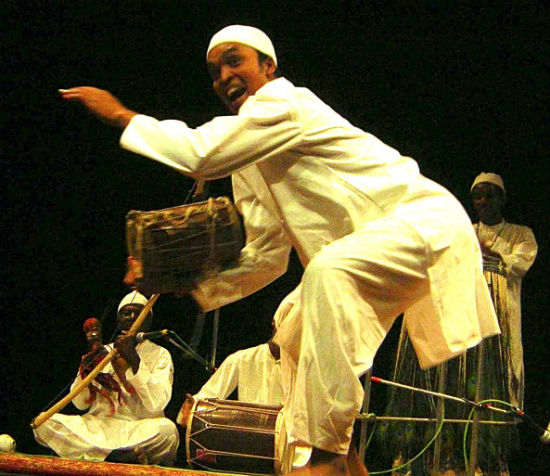
Sidi Goma Concert, 2005. Image By: Rita Banerji
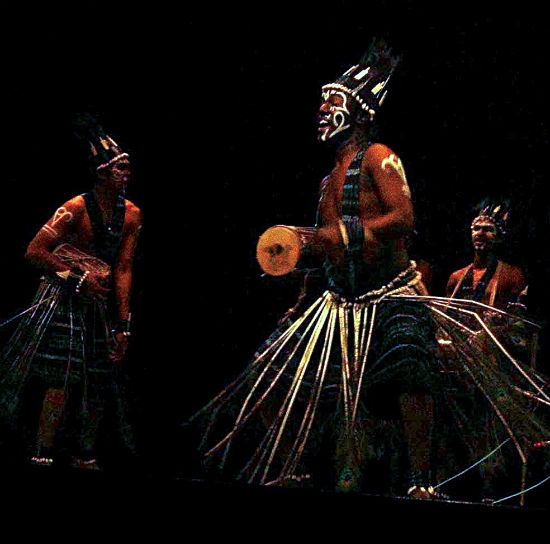
Sidi Goma Concert, 2005. Image By: Rita Banerji
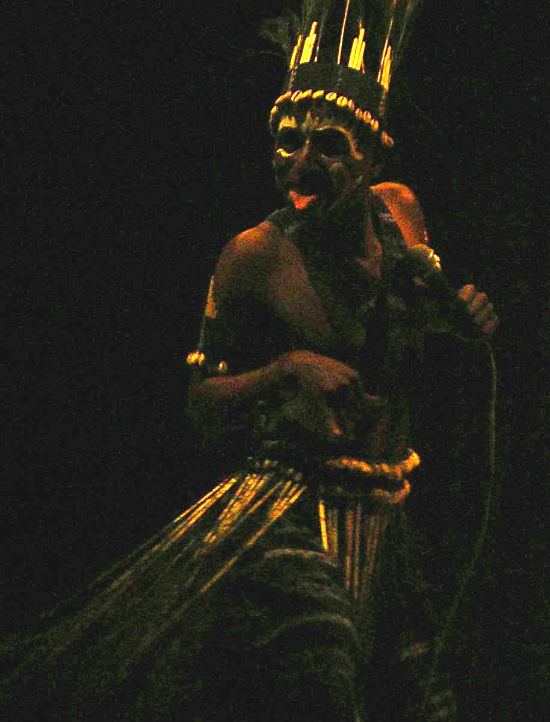
Sidi Goma Concert, 2005. Image By: Rita Banerji
Rita Banerji is an author, feminist and founder of The 50 Million Missing Campaign to end female genocide in India. She tweets at @rita_banerji
No comments:
Post a Comment